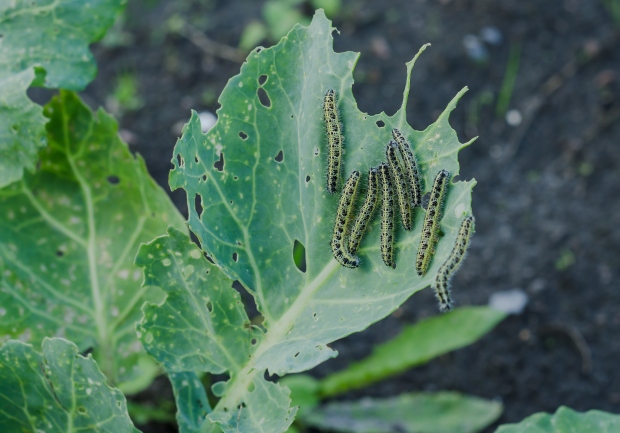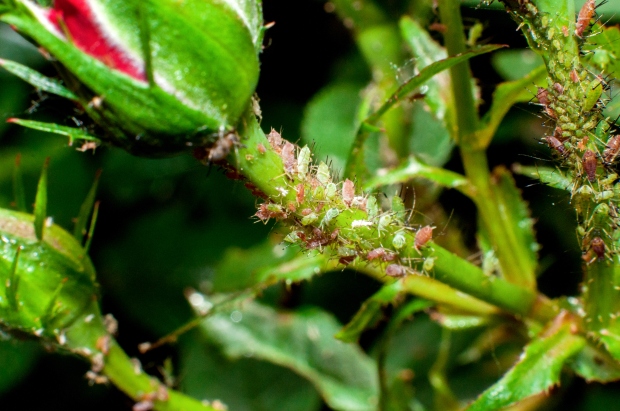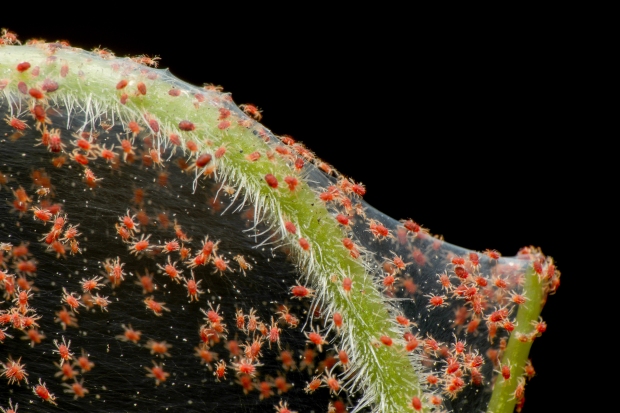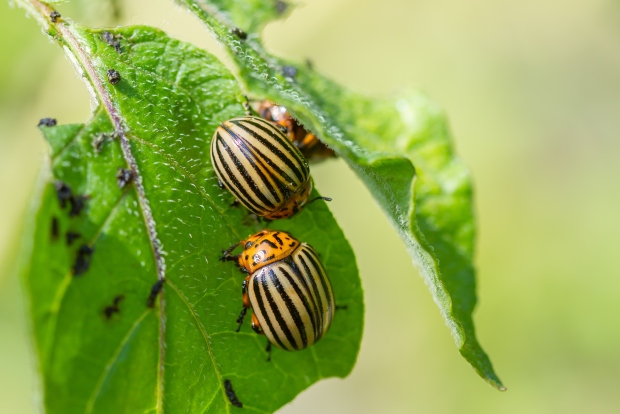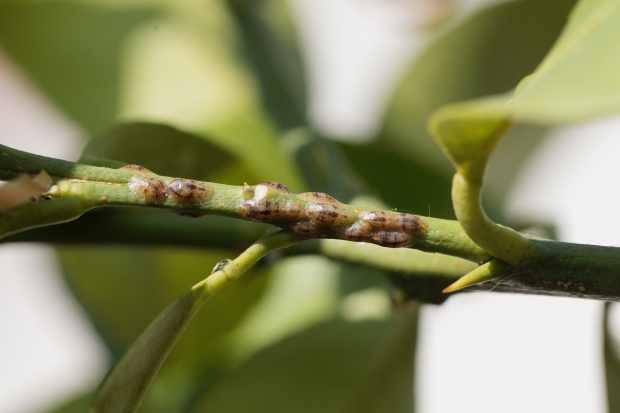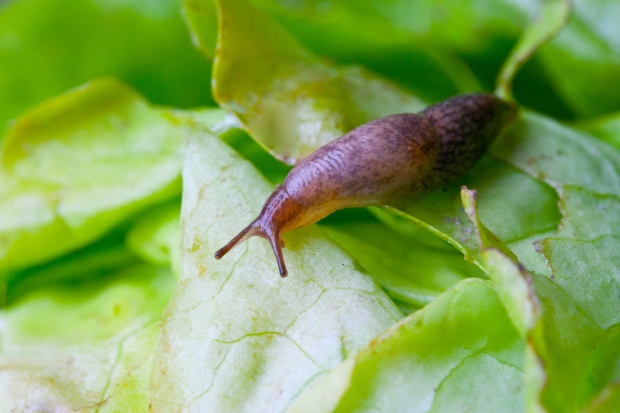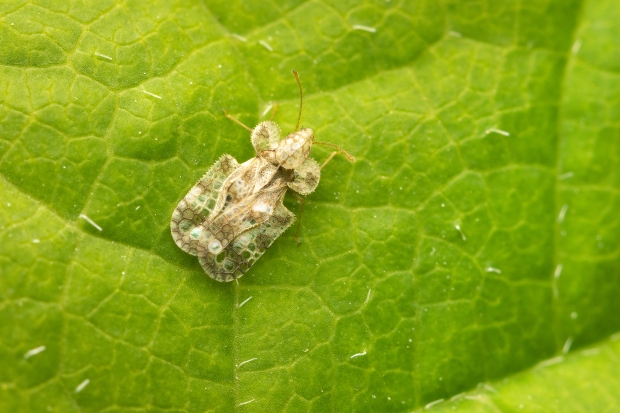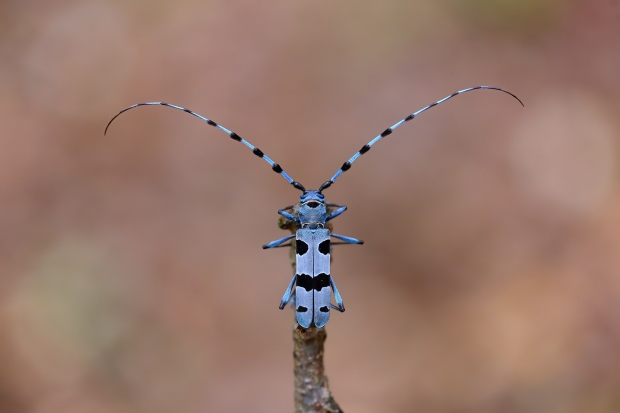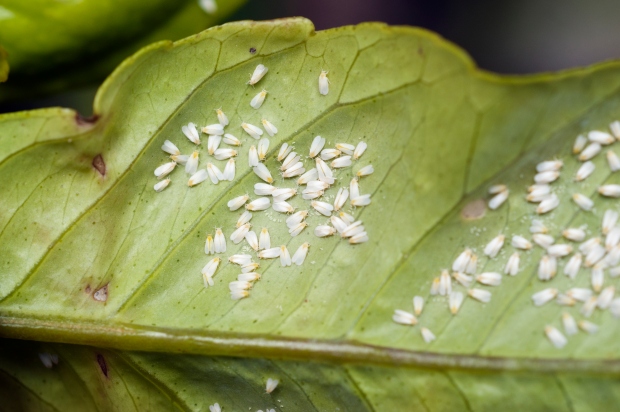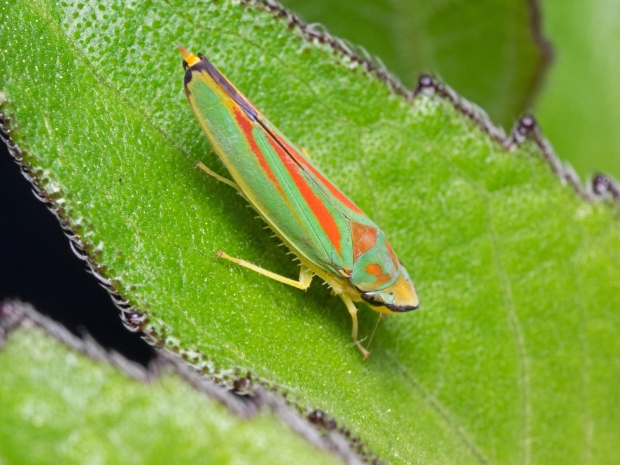Scalp Health Tests and Types
Scalp Health Tests and Types
Dandruff
Dandruff can be an annoying condition where you may be covered in white flakes from your scalp. One of the most common symptoms of dandruff is a very itchy scalp. You may feel the need to scratch constantly, resulting in white flakes falling from your scalp and then into your hair and onto your clothes. The flakes are excess skin cells that build up and then shed over time.
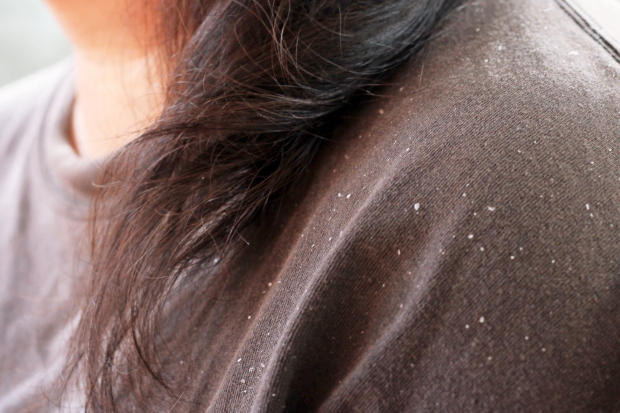
Many confuse dandruff with a dry scalp when the cause is the opposite. Dry scalp and dandruff may have similar results, but dandruff is actually due to a scalp with too much excess oil. Typically the flakes from dandruff are larger and sometimes yellow and even oily. This is due to the oil on the skin of your scalp causing buildup that must eventually shed off into those unattractive flakes.

There are treatments for dandruff, and you don’t have to despair about not wearing black or having flakes show in your dark hair. The most common and easily accessible treatments for dandruff are specific shampoos. Usually, you can rid yourself of dandruff with a gentle shampoo used regularly. If this doesn’t solve the problem, using a medicated dandruff shampoo a few times a week should clear it up.

Hair Loss
Hair loss can be a very worrisome condition for people. First, let’s address the symptoms of hair loss. The main symptom of hair loss is the loss of hair, but this can be seen in a few different ways. The hair may become patchy and even loose not only on the head but anywhere hair grows on the body. The way and location of the hair that is lost depends on the cause of the hair loss.
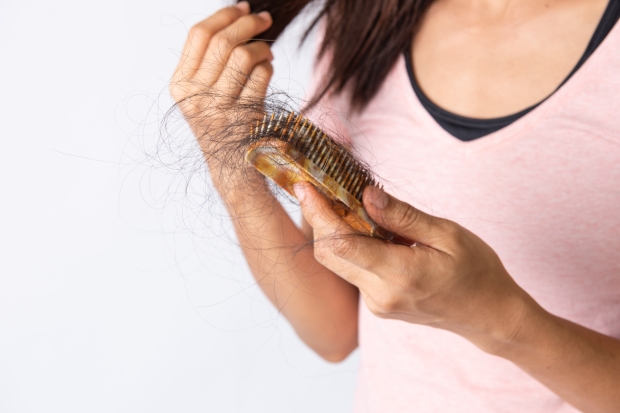
Hair loss is commonly caused by genetics combined with aging. Hair loss can result from a gene that runs in the family lines, which may cause you to lose hair even when you’re young. Most hair loss occurs later as your get older from the aging process. Other causes of hair loss can include reaction to medications, hormone imbalance, a lack of nutrients in your diet, and stress.
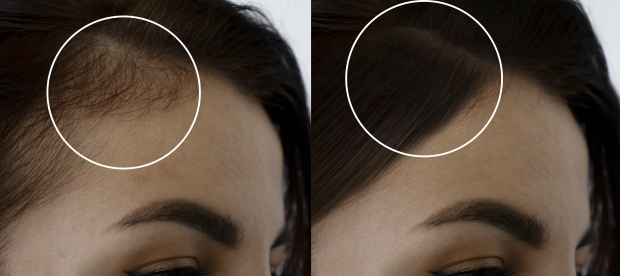
There are quite a few treatments for hair loss now. The hair loss treatment will depend on the cause and type of hair loss. For those who have hair loss due to medication or treatments, the hair may naturally grow back once the medication or treatments are no longer necessary. Male or female pattern baldness is treated with certain medicines or hair transplant procedures.

Tightly Curled Hair
The hair type known as tight curls or tightly curled hair might be the rarest hair type to have; tightly curled hair is typically associated with two types of curl patterns. The first is the corkscrew pattern which commonly appears as small ringlets throughout the hair. The second is known as the “Z” type and appears as zigzagging hair that forms tight coils throughout the hair. Tightly curled hair such as these two curl patterns can show up as fine or coarse hair. In any circumstance, tightly curled hair is challenging to keep from becoming dry compared to other hair types.

Keeping tight curls moisturized is the most important part of care for this hair type. Because of how tight these curls can get, it’s very difficult for the scalp’s natural oils to reach the curls and moisturize the hair naturally. Those with the hair type must go about and beyond to keep their hair from getting too dry by using deep conditioning treatments and avoiding any shampoo that may dry the hair out further, as well as high heat treatments.

Curly Hair
Curly hair is one of the rarest hair types in the world. This type of hair can come in many forms. Curly hair is typically similar to wavy but with a tighter wave pattern. Curly hair can be tight or loose curls, but the tightest curly hair is its hair type, so we’ll be discussing average curly hair today. Curly hair is typically coarse and thick compared to wavy or straight hair and is known to have much more texture. This hair type is also notorious for being naturally much more dry than other hair types.
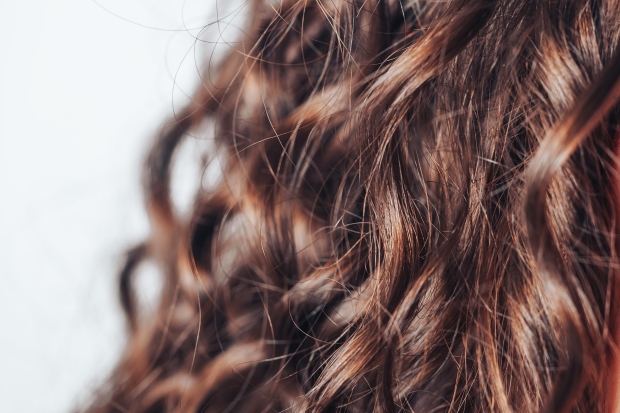
Just as other types of hair, curly hair needs its own specific hair care routine to keep the curls looking good. Because curly hair can be naturally dry, it’s important not to shampoo every day. This type of hair needs to hold on to any natural oils as much as possible to maintain moisture and avoid frizziness. Curly hair also does best when combed with a wide-tooth comb compared to other brushes and combs. This prevents too much pulling of the hair when styling. Many styling products such as moisturizers, creams, and gels will keep curls healthy and beautiful.

Wavy Hair
Wavy hair is the second most common hair type to have. Wavy hair is between straight and curly hair. The hair will have a natural wave pattern that will form without intervention. Wavy hair is probably the most versatile type because it can easily be worn straight or curly. The waves can be treated with gentle products to become much curlier and can also be straightened much easier than curly or tightly curled hair. All people with wavy hair will naturally look different compared to the next person with wavy hair due to the uniqueness of wave patterns.
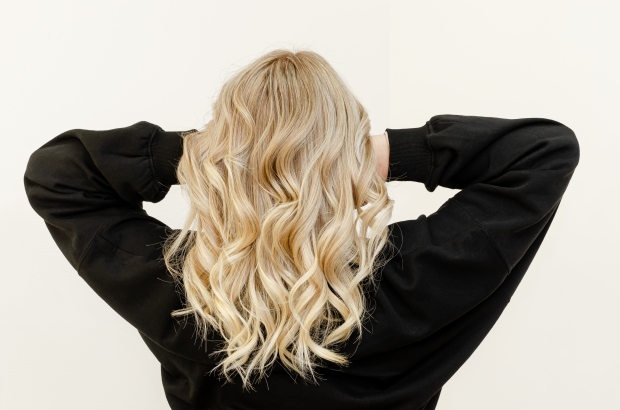
This hair type requires a variety of hair care. This is because waviness can come in many forms and even be present in fine or thick hair. It’s important not to overwash wavy hair as it can dry it out and cause the waves to be flat. Those with wavy hair will also want to choose hair care products based on how thick or fine their hair is. The best strategy is to experiment with different products to see what works best for each individual. Wavy hair also benefits from a leave-in conditioner to style the waves to their full potential.
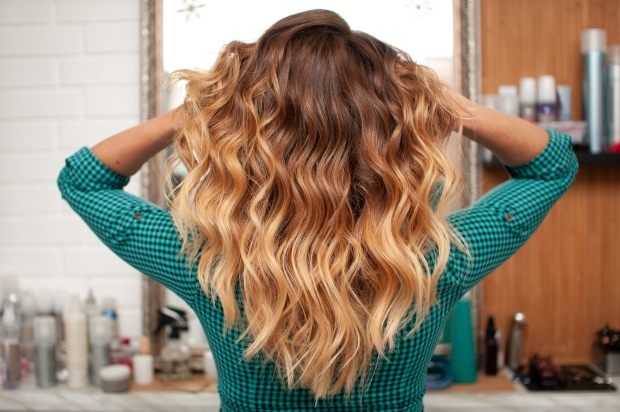
Straight Hair
Straight hair might be the most common hair type in the world. Many people have straight hair and may not even know it. Straight hair is not always perfectly straight, causing many to believe they have wavy hair. Very fine hair is typically from the straight hair type. Because the hair is so fine, it is easily affected by the environment. Straight hair is more easily affected by how it’s treated than other hair types. From pollution to using the wrong hair care products, straight hair can easily look like wavy hair.
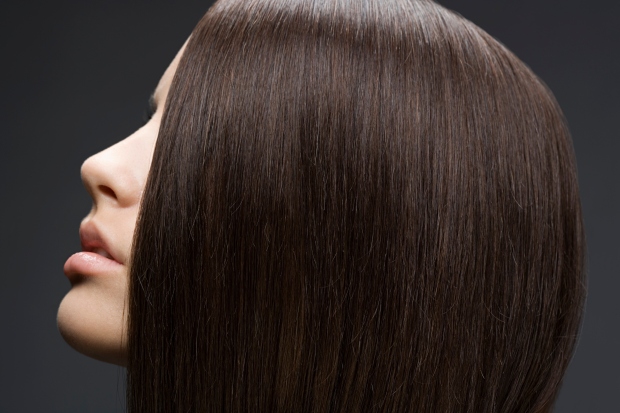
Straight hair needs a specific care routine to keep it looking its best. Most believe that straight hair is effortless to maintain; however, it may not even look like straight hair if it is not treated correctly. One of the essential parts of care for straight hair is to keep it appropriately moisturized. Straight hair can easily get frizzy when too dry. It’s also important to avoid breakage, which is common in fine, straight hair. Never brush hair after washing it but rather before. When hair is freshly washed, it is more prone to damage and breakage from brushing.
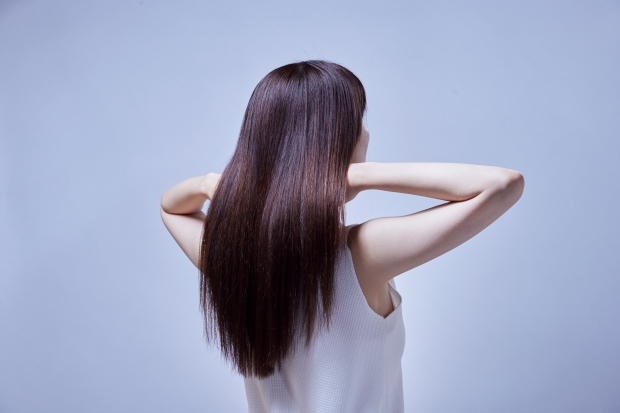
WeedA Summary RFP
Request for Proposal
WeedA Summary – Content Creation
v.1.0-20220331
Writing Guide: https://article.picturethisai.com/writing-guide/
What’s this content for?
As we know, weeds are just plants growing in the wrong place. Some would be confused why a pretty or even widely cultivated plant is a weed. In this writing task, we are going to explain simply to our users: “Why the plant you find is considered a weed in your region.”
You’ll be given a list of plants that are supposed to be invasive or noxious in the destination region (we define them “WeedA” in our cms system). Some are listed as invasive by local conservation councils, some are listed in reports issued by agricultural/forestry departments collaborated with academic societies, some are directly regulated by local laws. [We have attached a suggestive list of links that cover some typical legal and regulatory sources and credible weed list.]
Because whether a plant is considered a weed is regional, you would have a chance to receive a task that contains contents for multiple destination regions. For example, English description for both North America (for USA and Canada users) and the EU (for English users). You should check the information for these areas separately and write the summary respectively.
We desire a simple and accurate description and explanation.
Requirements
1. General Requirements
1.1 Word Count: around 100 words for each key-value. It is ok to run slightly longer if all the information is important.
1.2 Talk about Information on Weed Only: General information, usage (except for briefly mentioning why it could be seen in the market), and other information on this plant will be presented in other sections, please focus on the weed side.
1.3 Focus on local issues. Make sure to describe the weed based on regional circumstances.
2. Cover the following information:
2.1. Regulation Details (Mandatory)
- In which countries/states (or the whole region) it is regulated by law?
- Is it listed as invasive/noxious in which countries/states?
- Current status in the destination region: is it widely invaded already? Still, planting as ornamental plants? Or just list for a precaution?
Note:
Please search for as much information as possible to cover the situation in the destination area, and try to make a conclusion to make users ready to understand.
Describe the geographical distribution in a general way, as short as possible. Try to avoid listing different countries or states simply. E. g., we could use “Northeast Asia” instead of “Japan, Korea, Inner Mongolia, and Russian Far East”.
If a listing is necessary, still list no more than 3 countries/states. Just retain the most important 3 and use “etc.”, “and so on” for others. Try to arrange the order by population and severity of possible hazards. New York should be ahead of Alaska, and states that have been severely damaged should rank ahead of states that have not yet been invaded.
A direct referential link (to the governmental site or law itself) is needed for each law-regulated expression. If it is listed by councils or reports, please attach the original site as well. Please list the links in the comment box. A very brief explanation (in brackets) is needed for each of the links to let us know which point it supports. Most of the time, a region name (e.g.: California) will suffice, but you can also make any annotation if necessary.
2.2. Why is it a concern? (Mandatory)
- Growing/Reproducing aggressively
- Taking nutrition from other plants
- Producing toxins and harming other plants
- Poisonous to humans or animals
- Threatening the biodiversity
- Compete with the crops in the farms and orchards
- Has it already caused some damages? How severe it was?
Note: Referential links are also needed for this, and the following sections. Add explanations on why you cite it.
2.3. Habitats where it is prone to spread (Optional)
- Are there some habitats it prefers? In which condition it will get out of control easily?
2.4. What to do when I find this in my garden (Mandatory)
- You are supposed to give a piece of short advice on how to handle this plant: Just simply remove it, or you can still keep it but take care don’t release them into the environment.
- If it is still widely used in gardens in the destination region, do remind gardeners to “take measures to prevent it from spreading into the wild”.
- How to control the weed will be discussed in another section, so we shouldn’t go deep into solutions here.
- It is highly recommended that to give a piece of advice directly, instead of just telling the way the weeds spread, then let the users guess what to do. Knowing the way of spreading does allow skilled gardeners to work more precisely, but it can be difficult for a beginner (most of our users).
3. Report the Misclassified Plants:
If you could not find the plant on official reports, council lists, or any laws or governmental regulation lists in the destination region (examples see below), please leave the content box blank and leave “not weed A” in the comment box.
Credible Links for reports, council lists, and laws
Official Reports or Databases
Credible Councils Lists
Laws and Regulations
An Example of Weed Summary
- Note: 【The text inside brackets is just for explanation】
- Common lantana (Lantana camara)
English, North America
[109 words]
Although common lantana is still sold as an ornamental plant, it is listed as an invasive species by the state of California, Alabama, and Georgia.【Regulation】 It grows vigorously, often forms into dense thickets, and generates thousands of seeds for each mature plant. So it could dominate the biome quickly, supplanting local plants, and threatening biological diversity where it occupies. It is also regarded as an agricultural pest because it affects the yield of oranges orchards.【Concern】 It prefers moist environments, both open and partly shaded, especially those disturbed by human activities.【Habitat】 If you have this plant in your garden, you should take measures to prevent it from spreading into the wild.【What to do and the Reminder】
- Common lantana (Lantana camara)
English, Australia / New Zealand
[101 words]
Common lantana is a major invasive plant established in both Australia and New Zealand. Propagating, giving away, selling, or releasing it into the environment is strictly prohibited by law.【Regulation】 It grows vigorously, often forms into dense thickets, and generates thousands of seeds for each mature plant. So it could dominate the biome quickly, supplanting local plants, and threatening biological diversity where it occupies. 【Concern (Consistent phrases can exist between different regions)】 It prefers moist environments, both open and partly shaded, especially those disturbed by human activities.【Habitat】 In some regions rules require land occupiers to destroy it on their properties. Even if it is not, removal immediately is always recommended.【 What to do】

Unusual Orchids
Spring Sakura
Japanese Tea Garden
Small Spaces
The Spectacular History of Europe’s Oldest Botanical Garden
The Spectacular History of Europe’s Oldest Botanical Garden
There may be many botanical gardens that are impressively old, but only one is the oldest in Europe: the Orto Botanico di Pisa, established around 1543.
Today, botanical gardens are widespread throughout Europe and the world. But at one point, there were no botanical gardens in existence. To go from zero botanical gardens to the countless gardens we have currently, one garden had to be the first.
The oldest botanical garden in Europe is called the Orto Botanico di Pisa. However, the original year in which this garden opened is the subject of debate. While some sources state that the garden opened in 1544, others claim that it opened as early as 1543. Regardless of which date is correct, Orto Botanico di Pisa maintains its title as the oldest botanical garden in Europe.

A doctor and botanist from Imola named Luca Ghini was the first to call for the creation of this garden. With the help of Cosimo I de’ Medici Orto, Ghini was able to create this botanical garden along the Arno River. However, that original location did not last long.
Just 20 years after this garden’s inception, Ghini’s pupil, Andrea Cesalpino, changed its location. Then, in 1591, the garden moved again as Giuseppe Casabona relocated it to its current location near the Piazza Dei Miracoli.
The original purpose of the Orto Botanico di Pisa was to serve as a place to study all aspects of plant life. In fact, Orto Botanico di Pisa has held a strong association with university education since its inception. Today, the University of Pisa carries on this tradition as it is the institution responsible for maintaining the garden’s many features.
The Orto Botanico di Pisa includes seven distinct sections, each of which plays on a different botanical theme. Those seven sections include the botanical school, the cedar garden, the myrtle garden, the greenhouse area, the Del Gratta Garden, the Piazzale Arcangeli, and an area called the new garden. Each of those sections includes numerous scientific displays and collections, including unique plant specimens, endangered plant species, plant-related artwork, rare plant seeds, and some informative horticultural journals.

Not only is the Orto Botanico di Pisa famous for its historical components, but it also boasts some impressive statistics. For example, it includes more than 3,000 plant species, including some ancient ginkgo trees that have grown on the premises since 1787. The garden is also home to several ponds, fountains, and a library. Another noteworthy aspect of this garden is the iron-framed hothouse, which is one of the oldest remaining structures of its kind in all of Italy.
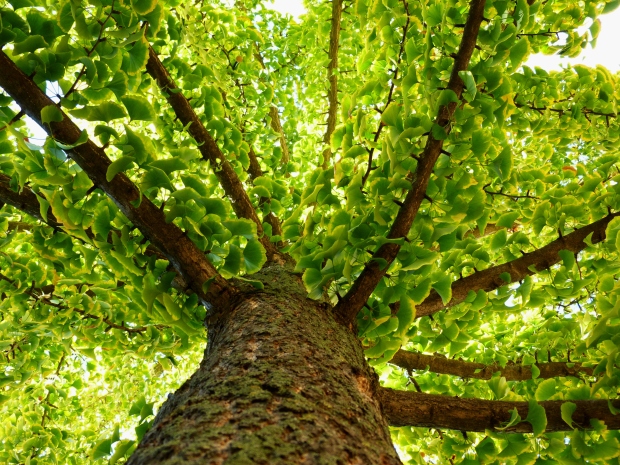
The massive quantity of plants and insightful horticultural knowledge is the product of several hundred years of work. Over the past few centuries, those who run the Orto Botanico di Pisa have continued to cultivate and collect numerous fascinating plant species. That effort has allowed the Orto Botanico di Pisa to remain a prominent source of botanical wisdom to this day.
However, while Orto Botanico di Pisa is the oldest botanical garden in Europe, it is not without some stiff competition. As a matter of fact, many people make the mistake of believing that another Italian botanical garden is the oldest. The Botanical Garden of Padua is also quite old, having been established in 1545, but falls just short of the Orto Botanico di Pisa by one or two years.
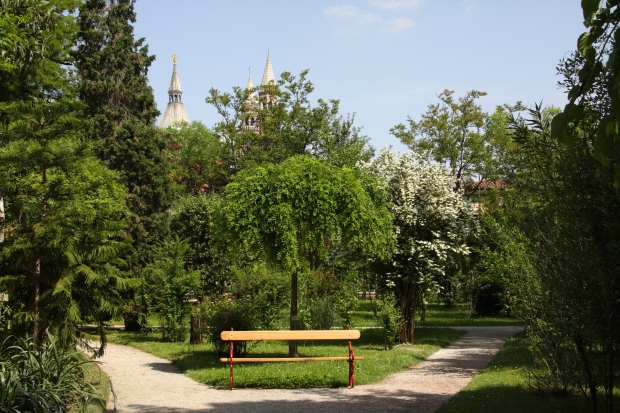
Despite not being the oldest botanical garden, the Botanical Garden of Padua remains impressive as it has undergone minimal changes to its layout during its long history. If you visit this garden today, you’ll find that it has the same original layout that existed in 1545. That layout consists of a circular central garden area with a ring of water surrounding it.
Like the Orto Botanico di Pisa, the Botanical Garden of Padua continues to serve its original purpose as a place of education and scientific research. Unlike the Orto Botanico di Pisa, the Botanical Garden of Padua is in its original location, which is why many consider it to be the oldest of all botanical gardens. What’s even more remarkable about this garden is its collection of plant species. Currently, the Botanical Garden of Padua is home to more than 6,000 species, which is about twice as many as the Orto Botanico di Pisa.
While there are many botanical gardens in Europe, none can claim to come before the Orto Botanico di Pisa. Since 1543, or 1544 depending on the source, this garden has been a consistent place of learning for all who are interested in the captivating world of plant life.
How to Use Plants to Make Traditional Weapons?
How to Use Plants to Make Traditional Weapons?
Weapons have been a part of human history since ancient times and have altered the course of civilization through their effectiveness in battle and hunting. But before the advent of modern technology, people needed to rely on a multitude of plant species to create such useful weapons.
Throughout history, humans have found countless uses for plants to aid in their survival and support the growth of their societies. Those plant uses took many forms, one of which was to create effective weaponry that would be useful in battle or while hunting. The tradition of using plants as raw materials for weapon creation is common throughout the world. There are numerous plant species that have contributed to this effort.
For example, the plant known as Viburnum dentatum is not only an incredibly attractive flowering shrub, it also proved quite useful to indigenous North American hunters and warriors. This plant goes by the common name arrowwood for a good reason. This plant grows multiple stems from its base, each of which is perfectly straight. Since those stems had minimal curves and bends, many Native American tribes found them to be ideal for creating arrows.

Arrows are not a weapon exclusive to North America. In fact, many cultures have relied on arrows for hunting and fighting for centuries. Throughout that long history of arrow use, people found ways to make their arrows more potent by adding poison to them. There are several common sources for arrow poison, many of which come from plants. For instance, the plant known as Chondrodendron tomentosum, which grows in Central and South America, contains poisonous alkaloids, which can affect the nervous system and cause paralysis. Many other plants have a similar toxic quality, such as Strychnos toxifera, Strychnos guianensis, and Sciadotenia toxifera. We can refer to these plants collectively as curare, a general term for any plant that contains toxic alkaloids suitable for poison arrows.
While arrows are an amazingly efficient projectile, they are essentially useless without a bow to launch them. Fortunately for traditional weapon makers, it’s possible to use plants to make powerful bows as well. The most famous example of using plants to make bows came from medieval Europe. During that period, the English were known for making longbows from the wood of Taxus baccata, or English yew. The heartwood and sapwood of the yew tree can withstand significant compression and tension, making them the best option for bow-making at the time. That single development of creating longbows from yew trees gave the English a significant advantage during many historic battles against opponents who made bows from less-suitable woods.
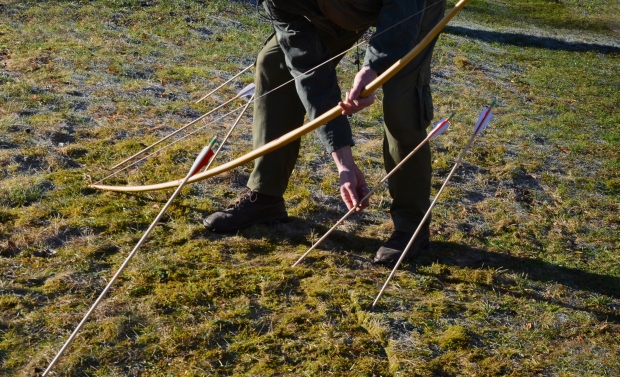
Another intriguing use of plants as a form of weaponry took place in Scotland. A Scottish legend suggests that the Scottish thistle plant once acted as an effective form of barbed wire. The story goes that a group of Vikings planned to attack a group of Scots while they were sleeping at night. However, before the ambush could occur, one of the Vikings stepped on the pointed thorns of a thistle plant and shouted out in pain. The sound of his voice awakened the Scots and saved them from the attack. Based on that legend and other uses, the thistle plant remains a prominent symbol of Scotland to this day.

Many plant-based weaponry developments occurred in Asia. In that region, the bamboo plant was particularly useful for making a wide range of weapons. Bamboo is incredibly versatile while also having an impressive amount of strength and durability. Those qualities made this plant the perfect option for bows, arrows, darts, blowguns, staffs, and much more. Not only was bamboo strong, but it was also widely available and was a material that people could carve easily, making it very popular for many uses, including in weapon making.
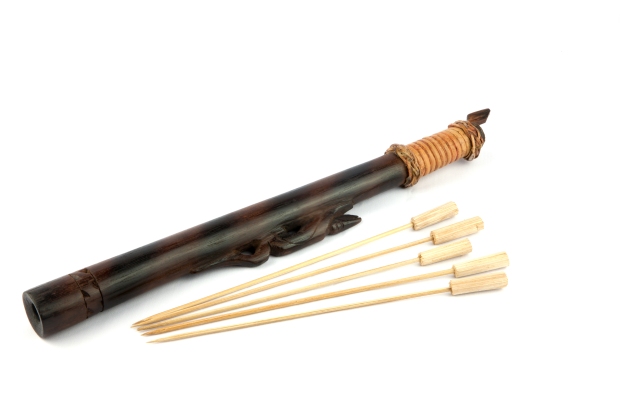
Australia is also home to an impressive history of weapon creation. One of the most well-known weapons to emerge from that continent is the boomerang, which Aboriginal people used for hunting and combat. The wood those people used to make boomerangs would vary based on the region in which they lived. In central Australia, the mulga plant, also known as Acacia aneura, was the hardwood of choice for this purpose. In other areas, sheoak, or Allocasuarina, was the raw material of choice for making boomerangs.
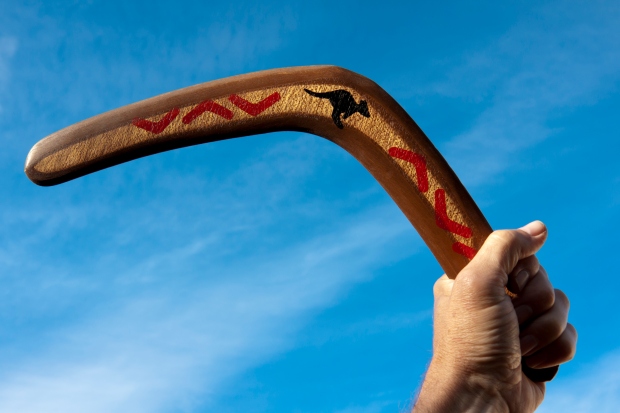
Humanity has a long tradition of creating and improving its weapons to become more effective while hunting or fighting on the battlefield. Many of the most reliable traditional weapons came from the raw materials plants produce. Those plants are all unique and have different origins, but each one holds an important place in human history and military development.
Do Figs Really Bear Fruit Without Blooming?
Do Figs Really Bear Fruit Without Blooming?
If you’ve ever watched a fig tree develop fruit, you might have noticed a conspicuous lack of flowers. While it might seem like figs bear fruit without blossoming, that’s not quite the case. In fact, figs create a cluster of flowers, you just might never see it.
It’s a common misconception that figs bear fruit without blossoming. They can actually produce 500 to 7,000 flowers, but you won’t ever see them. That’s because figs are technically inverted flowers. Unlike apple or peach trees, fig flowers bloom inside hollow pods known as syconium. Each of these flowers produces a single, one-seeded, hard-shelled fruit called an achene. Since there can be thousands of flowers, you’re actually eating multiple fruits when eating a fig!
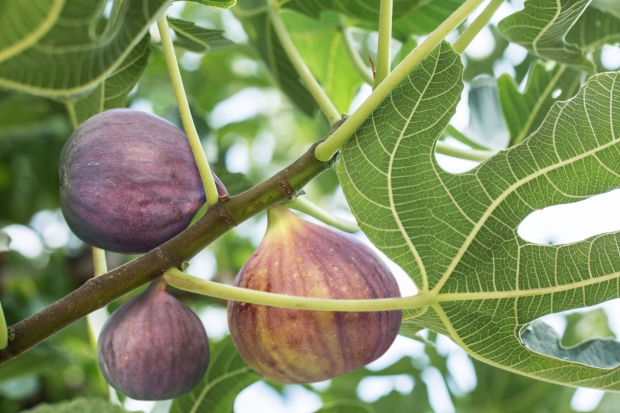
Wherever the flowers are located are where the seeds develop and eventually, the syconium develops into the fleshy false fruit that millions of people around the world know and love. The actual formation of the syconium begins with the initial growth of modified leaves known as bracts. These curve to form the outer pod and will eventually meet to form the mostly closed syconium. In many figs, there’s a small opening called the ostiole that forms by the interlocking of the bracts.
Fig Fruit and Reproduction
Since the flowers bloom internally, the fig tree can’t depend on wind or bees for pollination. Instead, many rely on small fig wasps to pollinate the flowers. In turn, fig wasps have a place where they can safely lay their eggs. This mutualistic relationship has been traced back as far as 34 million years ago, and the two creatures have co-evolved to the point where there is a unique species of fig wasps for each of the 8,000 or so species of fig that require pollination.

How does it work? A female fig wasp will make her way inside a male fig flower once she is ready to lay her eggs via the ostiole. Once she gives birth, she dies, and the eggs gestate inside the flower. Once mature, the male wasps will mate with the female wasps. While the male wasps don’t have wings, they do have teeth that they use to chew through the special fig pollen holders, which they drop down to the female. Eventually, the males will chew holes in the skin of the fig, and then die once their work is done.
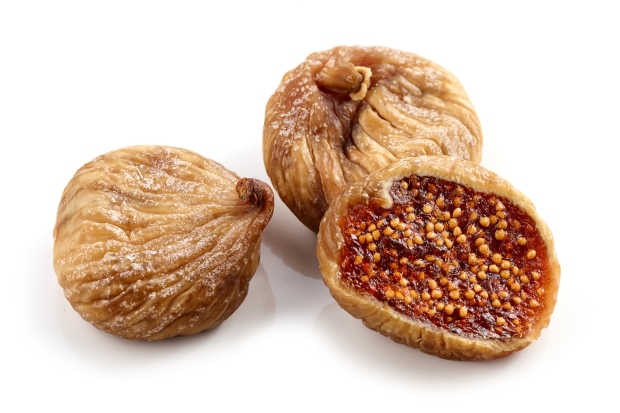
The females, now covered in pollen, search for another male fig flower to deposit her eggs. In the process, some of the female wasps land in female figs (the ones we eat). Although the female figs don’t have the special egg receptacles for the wasps to lay their eggs, she does successfully pollinate the flower, which then ripens into the fig you see at stores. Sadly, it’s a one-way trip for the female fig wasps, and she dies inside. The plant then releases an enzyme called ficin that breaks down the wasp into protein.
If the thought of potentially eating tiny wasps makes you go “ewww,” the good news is that there are many varieties that self-pollinate. In fact, if you live in the United States you’ll be happy to know that 95% of the figs produced and sold commercially in California are self-pollinating. Considering that the state produces 100% of the nation’s dried figs and 98% of its fresh figs, you might not have to worry too much about having an extra-crunchy fig.
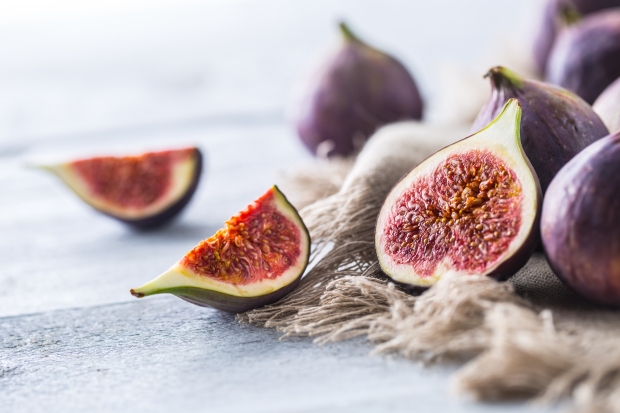
If you plan to grow your own fig tree, look for ones that are self-pollinating as there might not be any fig wasps in your area. Even if you do plant self-pollinating trees, you can still increase your yield by gently tapping or using an electric toothbrush on the fig pods when they grow to encourage pollination.
Final Thoughts
The humble fig might seem like a “boring” plant. After all, it doesn’t bloom! However, the more you learn about it, the more interesting it becomes. So the next time someone argues with you that figs don’t bloom, let them know that they actually do, they’re just inside the “fruit.” While you’re at it, let them know that when they eat a fig, they’re actually eating a flower!
